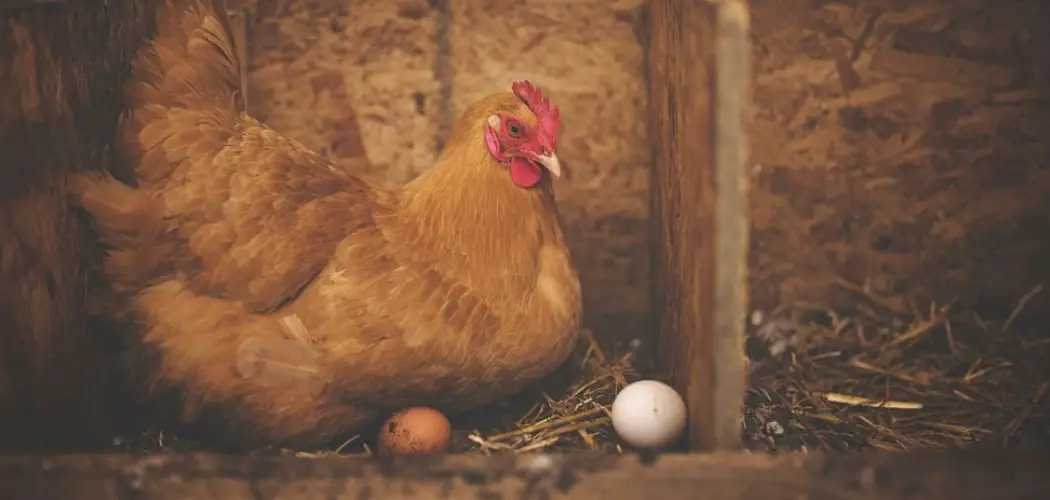Assisting chickens in laying eggs is a fundamental aspect of poultry care for backyard enthusiasts and commercial farmers alike. Maximizing egg production not only ensures a steady supply of fresh eggs but also supports the overall health and well-being of the flock.
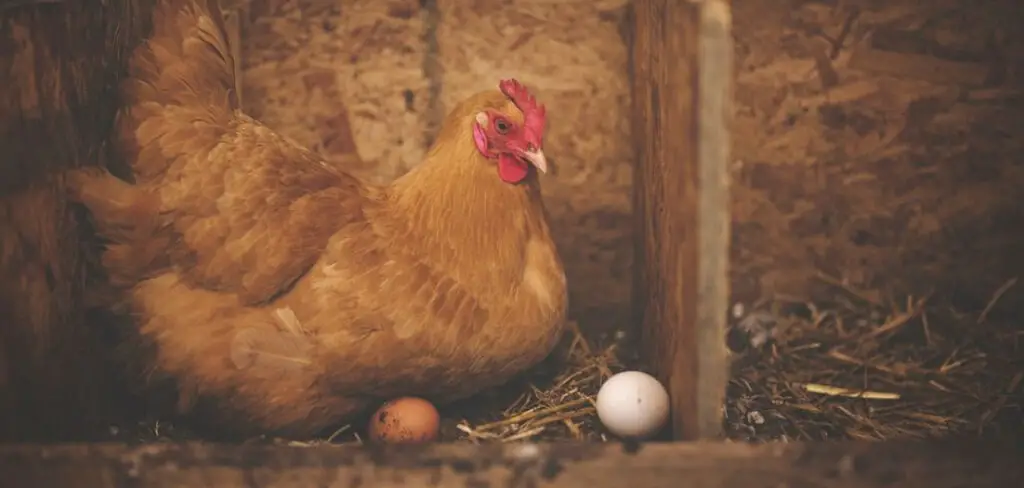
From providing a nutritious diet and ample hydration to optimizing living conditions and managing stress levels, there are numerous strategies to encourage chickens to lay eggs consistently. In this comprehensive guide, we’ll explore the various factors on how to help chickens lay eggs and delve into practical tips and techniques for boosting laying performance.
Whether you’re a novice poultry keeper or a seasoned veteran, understanding the intricacies of egg-laying behavior and implementing effective management practices is essential for maintaining a productive and contented flock. By empowering poultry enthusiasts with knowledge and resources, we aim to support the success and satisfaction of chicken keepers in their egg production endeavors.
Importance of Egg Production
The importance of egg production extends beyond the simple collection of eggs for daily consumption. At its core, consistent egg production is indicative of the health and well-being of chickens, serving as a mirror to their physical condition and the quality of care they receive.
For backyard enthusiasts, a steady flow of eggs not only symbolizes a return on investment in terms of time, effort, and resources devoted to poultry care but also ensures food security through self-sufficiency. Commercial farmers, on the other hand, rely on optimized egg production for the viability of their business, with productivity directly influencing profitability. Beyond economics and sustenance, egg production has broader implications for animal welfare, environmental sustainability, and even educational opportunities for those involved in or learning about poultry management. Therefore, enhancing egg production through proper care practices benefits not just the poultry keepers but also contributes to a larger ecosystem of health, education, and environmental stewardship.
Understanding Egg-laying Behavior
To effectively enhance egg production, a deep understanding of egg-laying behavior is crucial. Chickens’ egg-laying capacity is influenced by a complex interplay of factors including breed, age, nutrition, daylight exposure, and overall health.
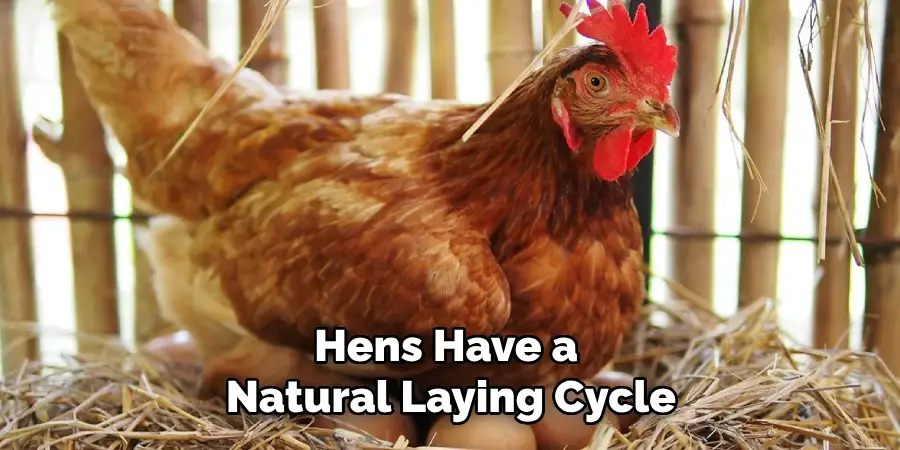
Most hens have a natural laying cycle that coincides with daylight hours, typically laying eggs in the morning hours. The breed of the chicken plays a significant role in determining the frequency and volume of egg production, with some breeds genetically predisposed to be more prolific layers than others.
Age is another critical factor; hens generally start laying eggs at about 5 to 6 months of age, with their peak production occurring within the first year to two years. After this period, egg production gradually decreases.
Nutrition is paramount, as a well-balanced diet rich in calcium, proteins, and essential vitamins directly impacts the quality and quantity of eggs produced. Furthermore, environmental conditions such as temperature, lighting, and the provision of a calm and secure environment can significantly affect laying behavior. Stressors, whether environmental or physiological, can disrupt laying patterns and diminish egg production.
Natural Instincts and Biological Processes
Understanding the natural instincts and biological processes of chickens is essential for creating an environment that supports their egg-laying capabilities. Chickens are creatures of habit, relying on instinctual behaviors such as foraging, nesting, and roosting to maintain their health and well-being. These behaviors are closely linked to their productivity and ability to lay eggs efficiently.
Foraging is a natural behavior that allows chickens to seek out a diverse diet, contributing to their nutritional needs and stimulating physical activity, which is crucial for overall health. Providing access to free-range areas or supplementing their diet with greens, seeds, and insects can mimic these natural foraging conditions.
Nesting instincts drive hens to seek safe, quiet, and dark places to lay their eggs. Facilitating these instincts by providing clean, comfortable nesting boxes encourages hens to lay eggs in a designated area, making egg collection easier and reducing the stress associated with egg-laying.

Roosting at night is another vital biological process, allowing chickens to feel secure and rest well. Proper roosting spaces help maintain a healthy pecking order and reduce stress within the flock.
Factors Affecting Egg Production Cycle
The egg production cycle of chickens is influenced by a myriad of factors, each playing a pivotal role in the efficiency and consistency of laying eggs. Understanding these factors is crucial for anyone looking to maximize their flock’s egg-laying potential.
- Light Exposure: Light is perhaps one of the most significant factors affecting egg production. Chickens need approximately 14-16 hours of daylight to maintain optimal egg-laying capacity. Insufficient light can halt egg production almost entirely, which is why artificial lighting is often used in poultry houses during shorter winter days.
- Diet and Nutrition: Proper nutrition is indispensable for high-quality egg production. A balanced diet rich in calcium, protein, and essential nutrients ensures the health of the hen and the quality of eggs. Lack of proper nutrition can lead to decreased egg production and poor eggshell quality.
- Water Intake: Water is vital for all living organisms, and chickens are no exception. Adequate and clean water supply is paramount for maintaining the egg production cycle. Even a short period of water deprivation can result in a significant drop in egg production.
- Health and Disease: The overall health of chickens directly impacts their ability to lay eggs. Parasites, illnesses, and stress can significantly reduce egg production. Regular health checks, vaccinations, and preventive measures are essential to maintain a healthy flock.
- Breed Variability: Different breeds of chickens have inherently different egg-laying capacities. While some breeds are known for their prolific egg-laying abilities, others may lay fewer eggs. Selecting the right breed based on egg production goals is necessary for achieving desired outcomes.
- Age of the Hen: The age of the chicken also plays a crucial role in egg production. Most hens start laying eggs at 5-6 months of age and reach peak production around their first year. Egg production typically begins to decline after 2-3 years, making the age of the flock a key consideration in production planning.
- Environmental Conditions: The environment in which chickens are housed can affect their stress levels and, subsequently, their egg production. Overcrowding, poor ventilation, extreme temperatures, and inadequate nesting conditions can lead to stress, reducing egg production.
Providing Optimal Nutrition for Egg Production

Achieving optimal egg production requires more than just basic feed; it demands a nutritionally rich diet tailor-made to support a hen’s egg-laying capabilities. A diet high in calcium is essential for producing strong eggshells, while proteins play a pivotal role in the formation of the egg itself.
Vitamins, especially Vitamin D, are crucial for calcium absorption and overall health, affecting the hen’s ability to maintain consistent egg production.
Layer feeds are formulated to meet these nutritional needs, offering a balanced blend of nutrients essential for egg production. However, supplementing this diet with additional calcium sources, such as oyster shell or limestone, can be beneficial, especially for older hens whose ability to absorb calcium may decrease over time.
Proteins, vital for the development of the egg’s structure, can be boosted with mealworms, fishmeal, or soy products, ensuring hens receive the necessary amino acids. Greens and vegetable scraps not only add variety to their diet but also contribute essential vitamins and minerals, supporting overall health and egg quality.
Choosing Quality Layer Feed and Supplements
When it comes to sustaining high levels of egg production, choosing the right layer feed and supplements is of paramount importance. Quality layer feed serves as the foundation of a hen’s diet, designed to provide all the necessary nutrients required for consistent and efficient egg production. The selection of layer feed should be based on its nutritional content, ensuring it offers a balanced mix of energy, protein, calcium, and essential vitamins and minerals.
In addition to standard feed, supplements can play a critical role in optimizing a hen’s health and egg-laying capacity. Calcium supplements, such as oyster shell or limestone granules, are vital for maintaining strong eggshell integrity. Grit is another essential supplement, assisting in the digestion process of the hens, which in turn aids in nutrient absorption.
For enhancing the nutritional profile of the feed, incorporating omega-3 rich supplements can lead to the production of eggs with increased omega-3 fatty acid content, which is highly beneficial for human consumption. Similarly, probiotic supplements can improve gut health in chickens, leading to better nutrient absorption and overall health, positively impacting egg production.
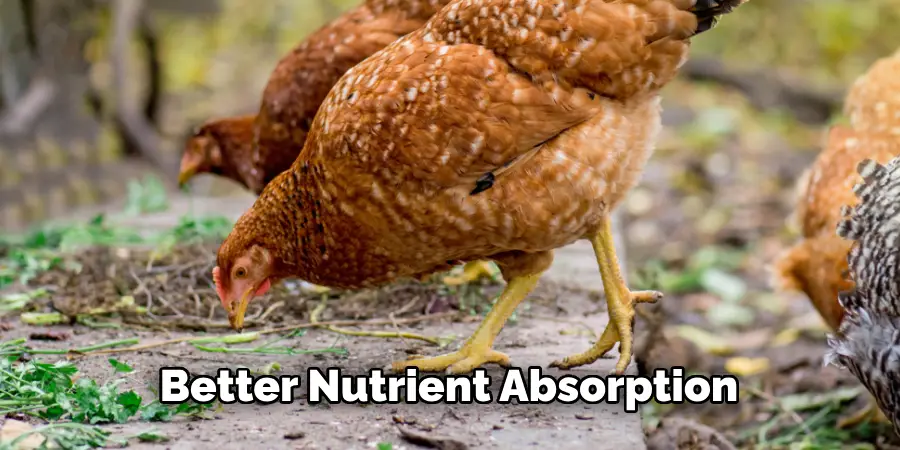
Importance of Clean Water and Grit in Egg Production
Just as nutrition plays a pivotal role in the health and productivity of a chicken flock, so too does the availability of clean, fresh water and the appropriate use of grit. Clean water is, without question, the most critical component of a chicken’s diet. It is essential not only for hydration but also for the physiological processes of digestion and nutrient absorption, which directly impacts egg production.
Chickens require constant access to fresh water to maintain high levels of production; any limitation in water intake can quickly lead to a decrease in egg quantity and quality.
Grit is another vital aspect of the diet, especially for chickens that are not exclusively fed on commercial feeds but have access to whole grains or range freely outdoors. Grit aids in the mechanical breakdown of food within the gizzard, allowing for more efficient digestion and nutrient extraction from the feed. This process is crucial for the optimal health of the chicken and, consequently, for maintaining steady and high-quality egg production. Without adequate grit, chickens may suffer from digestive issues, leading to decreased feed efficiency, poorer health, and reduced egg production.
10 Methods How to Help Chickens Lay Eggs
1. Provide Proper Nutrition:
A well-balanced diet is the cornerstone of healthy egg-laying hens. Ensure your flock has access to high-quality layer feed containing essential nutrients like protein, calcium, and vitamins. Protein supports overall health and egg production, while calcium is crucial for strong eggshells.
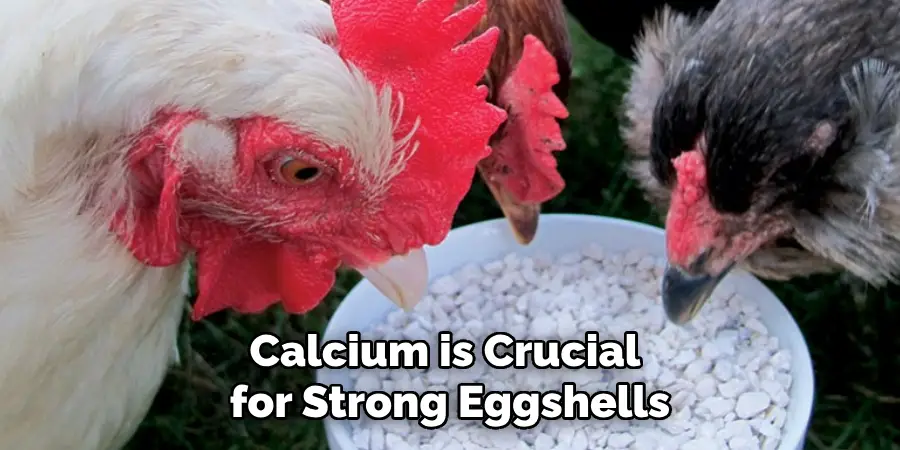
Supplement their diet with treats such as mealworms, leafy greens, and kitchen scraps to provide variety and additional nutrients. Offering calcium sources like crushed eggshells or oyster shell on the side ensures hens have the necessary building blocks for sturdy shells, reducing the risk of egg breakage and shell deformities.
2. Maintain Optimal Health:
Healthy chickens are happy chickens, and happy chickens lay more eggs. Implement a proactive health management plan that includes regular deworming, vaccinations against common poultry diseases, and routine health checks. Keep an eye out for signs of illness or distress, such as lethargy, changes in appetite, or abnormal droppings, and address any issues promptly. Provide access to clean water at all times, as dehydration can negatively impact egg production.
3. Create Comfortable Nesting Areas:
A peaceful and cozy nesting environment encourages hens to lay eggs regularly. Design nesting boxes that are spacious, dark, and secluded, mimicking the environment of a natural nest. Fill the boxes with soft, clean bedding material like straw, shredded paper, or pine shavings to provide a comfortable and inviting space for egg-laying. Ensure there are enough nesting boxes for the size of your flock to prevent overcrowding and competition for space.
4. Manage Lighting Conditions:
Light plays a crucial role in regulating the reproductive cycle of chickens. Provide a consistent lighting schedule with 14-16 hours of light per day to simulate long summer days, which signals to hens that it’s time to lay eggs.
Supplement natural daylight with artificial lighting in the coop during the winter months to maintain consistent day length and prevent a decline in egg production. Be sure to provide periods of darkness for rest and sleep, as uninterrupted sleep is essential for overall health and well-being.
5. Encourage Natural Behaviors:
Chickens are happiest when they can exhibit their natural behaviors, including scratching, pecking, and dust bathing. Provide opportunities for your flock to engage in these activities by offering access to outdoor areas with plenty of space to roam and forage.
Allow them to explore a variety of natural materials like logs, branches, and leaf litter, which stimulate their natural instincts and reduce stress levels. Enriching their environment with items like hanging treats, perches, and dust bathing areas keeps them mentally and physically stimulated, leading to improved overall health and egg production.
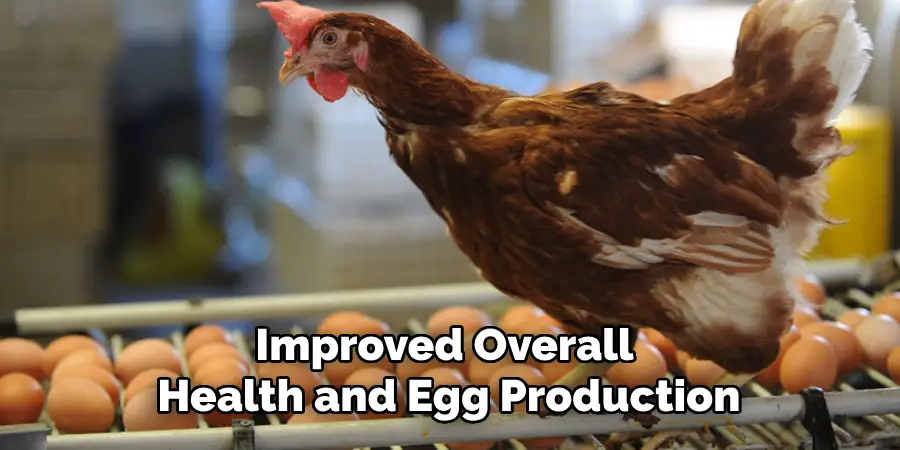
6. Establish a Consistent Routine:
Chickens thrive on routine and predictability. Establish a daily schedule for feeding, watering, and egg collection, and stick to it as closely as possible. Consistency helps reduce stress and anxiety in chickens, which can negatively impact egg production.
Collect eggs at the same time each day to prevent broodiness and encourage hens to continue laying. Minimize disruptions to their routine, such as changes in feed, water sources, or coop layout, to maintain a sense of stability and security within the flock.
7. Monitor Egg Production:
Keep a close eye on your chickens’ egg-laying patterns and behavior to track their productivity and identify any potential issues. Monitor the number, size, and quality of eggs laid by each hen, as well as any changes in frequency or irregularities in shell quality. Regular monitoring allows you to detect and address problems early, such as stress, illness, or dietary deficiencies, before they impact egg production.
Keep accurate records of egg production and any observations or interventions made to track progress over time and make informed management decisions.
8. Provide Adequate Space and Roosting Opportunities:
Overcrowding can lead to stress, aggression, and reduced egg production in chickens. Ensure your coop and outdoor run provide ample space for your flock to move around freely, stretch their wings, and engage in natural behaviors.
Provide sturdy roosting bars at different heights to accommodate the preferences of individual birds, with enough space for each hen to comfortably perch at night. Comfortable roosting areas contribute to better sleep quality, which is essential for maintaining overall health and egg production.
9. Minimize Stressors:
Stress is a common cause of decreased egg production in chickens. Minimize stressors in the environment by providing a calm, safe, and secure living space for your flock. Avoid sudden changes or disturbances, such as introducing new flock members, moving the coop, or loud noises, which can cause anxiety and disrupt egg-laying patterns. Handle your chickens gently and calmly, and avoid overcrowding to reduce stress levels and promote a positive flock dynamic.
10. Consider Breed Selection:
Different chicken breeds have different egg-laying capabilities and preferences. When selecting chickens for your flock, choose breeds known for their prolific egg production, such as Leghorns, Rhode Island Reds, or Australorps. Consider factors such as egg color, size, and frequency, as well as temperament and suitability for your climate and management practices.

Research breeds thoroughly to find the best fit for your needs and preferences, and consider incorporating a variety of breeds to enjoy a colorful and diverse egg basket.
Conclusion
In conclusion, supporting chickens in laying eggs is a multifaceted endeavor that requires attention to various factors such as nutrition, hydration, environment, and stress management. By implementing the strategies discussed in this guide, poultry enthusiasts can optimize egg production and ensure the health and well-being of their flock.
Whether it’s providing a balanced diet rich in calcium and protein, maintaining clean and comfortable living quarters, or minimizing sources of stress, every effort contributes to a productive and contented group of hens. Thanks for reading, and we hope this has given you some inspiration on how to help chickens lay eggs!
About
Outdoor Fixes is a distinguished figure in the world of Diy design, with a decade of expertise creating innovative and sustainable Diy solutions.
His professional focus lies in merging traditional craftsmanship with modern manufacturing techniques,
fostering designs that are both practical and environmentally conscious. As the author of diy,
outdoorfixes delves into the art and science of outdoorfixes-making, inspiring artisans and industry professionals alike.
Education RMIT University
(Melbourne, Australia) Associate Degree in Design (Outdoor Fixes) Focus on sustainable design, industry-driven projects,
and practical craftsmanship. Gained hands-on experience with traditional and digital manufacturing tools, such as CAD and CNC software.
Nottingham Trent University
(United Kingdom) Bachelor’s in outdoorfixes.com and Product Design (Honors) Specialized in product design with a focus on blending creativity with production
techniques. Participated in industry projects, working with companies like John Lewis and Vitsoe to gain real-world insights.
Publications and Impact
In diy, Outdoor Fixes his insights on indoor design processes, materials, and strategies for efficient production.
His writing bridges the gap between artisan knowledge and modern industry needs, making it a must-read for both budding designers and seasoned professionals.

